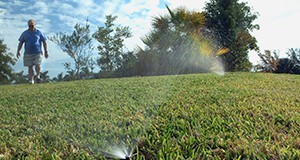Abstract
Due to the scarcity of water resources among states and the influx of people, balancing agriculture and public water needs has become a contentious issue. Therefore, dialogue must take place to educate and inform the general public and local officials about the reality of agricultural water use. This is the second article in a series describing the differences in perceptions of agricultural water use in Florida between the general public and local officials. This 4-page fact sheet identifies the differences among groups for agricultural water use and provides ways to change Extension programming according to these differences. Written by Courtney T. Owens, Alexa J. Lamm, and Ricky W. Telg, and published by the Department of Agricultural Education and Communication, April 2016.
References
Barnett, C. (2007). Mirage: Florida and the vanishing water of the eastern U.S. Ann Arbor: University of Michigan Press. https://doi.org/10.3998/mpub.187043
Bruening, T., & Martin, R. A. (1992). Farmer perceptions of soil and water conservation issues: Implications to agricultural and extension education. Journal of Agricultural Education, 33(4), 48-54. doi:10.5032/jae.1992.04048 https://doi.org/10.5032/jae.1992.04048
Cox, D., Lawver, D. E., Baker, M., & Doerfert, D. (2004). Critical water related curriculum needs as perceived by agricultural science teachers in programs located within the boundaries of the Ogallala aquifer. Journal of Agricultural Education, 45(4), 22-33. doi:10.5032/jae.2004.04022 https://doi.org/10.5032/jae.2004.04022
Florida Department of Environmental Protection. (2013). Annual status report on regional water supply planning. Florida: Florida Department of Environmental Protection.
Gaines, E. (2014). Media representations of science, and implications for neuroscience and semiotics. Semiotica, 200, 103-117. doi:10.1515/sem-2014-0011 https://doi.org/10.1515/sem-2014-0011
Gaziano, C. (1983). The knowledge gap: An analytical review of media effects. Communication Research: An International Quarterly, 10(4), 447. https://doi.org/10.1177/009365083010004003
Greenberg, M. R. (2009). Water, conflict, and hope. American Journal of Public Health, 99(11), 1928-1930. doi:10.2105/AJPH.2009.159863 https://doi.org/10.2105/AJPH.2009.159863
Hahn, A. J., Greene, J. C., & Waterman, C. (1994). Educating about public issues. Lessons from eleven innovative public policy education projects. Ithaca, NY: Cornell University.
Kwak, N. (1999). Revisiting the knowledge gap hypothesis: Education, motivation, and media use. Communication Research, 26(4), 385-413. doi:10.1177/009365099026004002 https://doi.org/10.1177/009365099026004002
Lamm, A. J., Taylor, M. R., & Lamm, K. W. (2016). Discerning gaps between public and local official views of agricultural water use to inform practice. Paper submitted for presentation at the 2016 Southern Region American Association for Agricultural Education Conference, San Antonio, TX. https://doi.org/10.5032/jae.2016.03180
Lamm, K. W., Lamm, A. J., & Carter, H. S. (2015). Bridging water issue knowledge gaps between the general public and opinion leaders. Journal of Agricultural Education, 56(3), 146-161. doi 10.5032/jae.2015.03146 https://doi.org/10.5032/jae.2015.03146
Lee, H., & Yang, J. (2014). Political knowledge gaps among news consumers with different news media repertoires across multiple platforms. International Journal of Communication, 8, 597-617.
Patterson, L. (2012). 2012 RBC Canadian water attitudes study. RBC Blue Water Project. Retrieved from http://www.rbc.com/community-sustainability/environment/rbc-blue-water/index.html
Schaible, G., & Aillery, M. (2012). Water conservation in irrigated agriculture: Trends and challenges in the face of emerging demands, EIB-99, U.S. Department of Agriculture, Economic Research Service. Retrieved from http://www.ers.usda.gov/media/884158/eib99.pdf https://doi.org/10.2139/ssrn.2186555
United States Department of Agriculture Natural Resources Conservation Service (2006). Water management. Retrieved from http://www.nrcs.usda.gov/Internet/FSE_DOCUMENTS/nrcs143_023284.pdf
Whitaker, B. K., & Dyer, J. E. (2000). Identifying sources of bias in agricultural news reporting. Journal of Agricultural Education, 41(4), 125-133. doi:10.5032/jae.2000.04125 https://doi.org/10.5032/jae.2000.04125
Young, S. T., & Dhanda, K. K. (2013). Sustainability; essentials for business. Thousand Oaks, CA: Ringgold Inc. https://doi.org/10.4135/9781544308432

